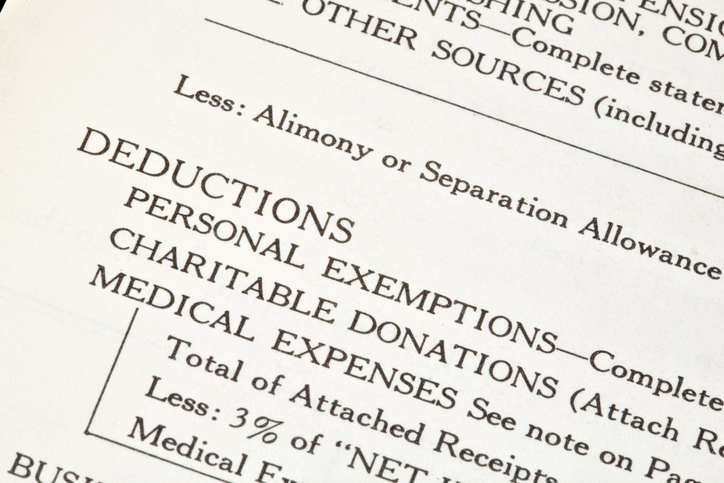When divorce occurs, one ex-spouse is often obligated to make continuing payments to the other spouse. However, for the payments to be deducted by the payer, they must meet the tax-law definition of alimony. For any particular payment to qualify as deductible alimony for federal income tax purposes and meet the tax law definition of alimony, all the following requirements must be met:

- The payment must be made pursuant to a written divorce decree or separation agreement such as a temporary support order. Note that payments made in advance of signing a written divorce or separation agreement or before the effective date of a court order or decree cannot be deductible alimony. Such payments are considered voluntary and are therefore nondeductible. The same is true for payment of amounts in excess of what is required under a written divorce decree or separation agreement.
- The payment must be to or on behalf of a spouse or ex-spouse. Therefore, payments to third parties, such as attorneys and mortgage companies, are okay if made on behalf of a spouse or ex-spouse and pursuant to a divorce decree or separation agreement.
- The divorce decree or separation agreement must state the payments are alimony.
- After divorce or legal separation (meaning the couple is considered divorced for federal income tax purposes), the ex-spouses cannot live in the same household or file a joint return for the year they separated or thereafter.
- The payment must be made in cash or cash equivalent such as check or money order.
- The payment cannot be fixed or deemed child support in the divorce decree.
Fixed child support simply refers to amounts designated as such in the divorce or separation agreement, so it’s easy to identify. Payments are considered to be deemed child support if they are terminated or reduced by any of the following so-called contingencies relating to a child: a. Attaining the age 18, or the local age of majority.
b. Death.
c. Marriage.
d. Completion of schooling.
e. Leaving the ex-spouse’s household.
f. Attaining a specified income level. - The payer’s return is required to include the recipient’s social security number.
- The obligation to make payments (other than payment of delinquent amounts) must cease if the recipient party dies. If the divorce decree is unclear about whether or not payments must continue, state law controls. If under state law, the payer must continue to make payments after the recipient’s death, the payments cannot be alimony. Therefore, to avoid problems, the divorce decree should always explicitly stipulate whether a payment obligation continues to exist after the death of the recipient party. Failing this test is probably the most common cause for lost alimony deductions.
- There is also an IRS rule that states if alimony payments decrease by more than
$15,000 per year between years 1 and 2, or years 2 and 3, then part of the payments will not qualify for a tax deduction to the payor (and hence will not be taxable to the payee.) In other words, if alimony payments total more than $15,000 per year then they must last more than one year and cannot be reduced too quickly. The reason for this is because the IRS sees this as a property settlement, not alimony. Because of this rule replacing all monthly payments with a lump sum “alimony” payment that is paid all in one year will often cause a trigger of this recapture rule, since alimony will go down to $0 in year
Keep in mind the Tax Cuts Jobs Act repealed the deduction for alimony paid and the corresponding inclusion of alimony in income by the recipient. The provision is effective for any divorce or separation agreement executed after December 31, 2018, or for any divorce or separation agreement executed on or before December 31, 2018, and modified after that date, if the modification expressly provides that the amendments made by this provision apply to such modification. Thus, alimony paid under a separation agreement entered into prior to the effective date is generally grandfathered.
It is very important to consult a tax attorney like Gregory J. Spadea before signing the marital settlement agreement. You can reach him at the Law Offices of Spadea & Associates, LLC in Folsom at 610-521-0604.














